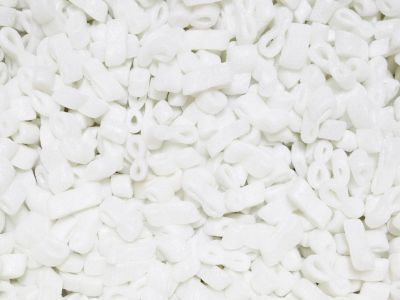When filled with potting medium, large pots can be extremely heavy and unmovable. Many glazed decorative pots may also lack proper drainage holes or do not drain well due to all the potting mix. Not to mention, purchasing enough potting soil to fill large pots can become quite expensive. So what’s a gardener to do? Read on to learn more about using Styrofoam for container filler.
Using Styrofoam in Containers
In the past, it was recommended that broken pieces of clay pots, rocks, wood chips, or Styrofoam packing peanuts be placed in the bottom of pots as filler and to improve drainage. However, research has shown that clay pots, rocks, and wood chips may actually cause the pots to drain slower. They can also add weight to the container. Styrofoam is lightweight but does Styrofoam help with drainage? For decades, container gardeners have used Styrofoam for drainage. It was long-lasting, improved drainage, did not add weight to the pot, and made an effective filler for deep pots. However, because landfills are overfilled with non-biodegradable products, many Styrofoam packing products are now made to dissolve in time. It is not recommended to use Styrofoam peanuts for potted plants now, because they may break down in water and soil, leaving you with sunken-in containers. If you find yourself with a large amount of Styrofoam from product packing and question, “Should I line potted plants with Styrofoam?”. there is a way to test the Styrofoam. Soaking these packing peanuts or broken bits of Styrofoam in a tub of water for several days can help you determine if the type you have breaks down or not. If pieces begin to dissolve in the water, do not use them in the bottom of pots.
Does Styrofoam Help With Drainage?
Another problem gardeners have had when using Styrofoam in containers is that deep plant roots may grow down into the Styrofoam. In pots with little to no drainage, the area of Styrofoam may be waterlogged and cause these plant roots to rot or die. Styrofoam also contains no nutrients for plant roots to absorb. Too much water and lack of nutrients can cause beautiful container designs to suddenly wilt and die. It is actually recommended that large containers be planted in the “container in a container” method, where an inexpensive plastic pot is planted with the plants, then set atop filler (like Styrofoam) in the large decorative container. With this method, container designs can easily be changed out each season, plant roots are contained within the potting mix and, if Styrofoam filler does break down in time, it can be easily fixed.
